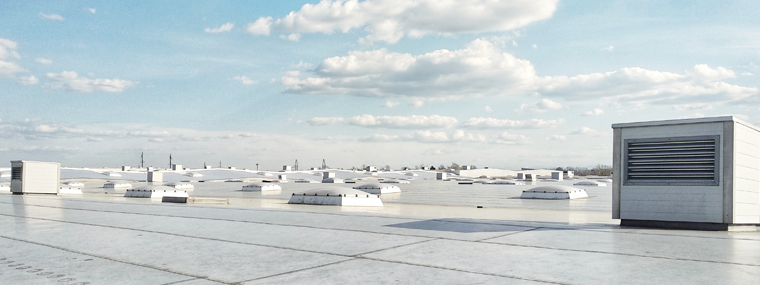
Advances in Roofing Technology Mean Now Might Be the Time to Upgrade Your Roof
By Casey Crowther / Published May 2019

Technology is being developed at a lightning pace. Think about the cell phones of 15 years ago. Flip phones were all the rage, and the top manufacturers bragged about the latest models with, get this, 1-megapixel cameras.
Consider how you watched a movie at home 20 years ago. You wouldn’t stream flicks over WiFi, and you certainly couldn’t watch movies on a mobile device. Instead, you’d stick a tape into a VCR and hope the last person who rented it had rewound the movie reel.
Before Google Maps and voice-activated navigation systems in vehicles, you drove from Point A to Point B by literally plotting your path on a printed map or stopping at gas stations to ask for directions.
Whenever technology changes, we upgrade—cell phones, movies, maps, appliances, computers, transportation…it’s an extensive list.
But what about your roof? Roofing technology has improved over the years, too, and the shingles, tiles, metal panels, insulation, and other components of a roof today aren’t like their predecessors from 30, 20, or even 10 years ago.
Engineers have developed roofing materials that are more durable, weather-resistant, and eco-friendly, and as is the case with any type of emerging technology, there’s always a point when it makes sense to invest in the newer model.
How do you know if that time is now for a new roof? If your 20- or 25-year-old roof is holding up structurally, with no leaks or apparent damage, it might not seem like there’s a compelling case to replace a roof. However, it’s likely that your air conditioning system is working overtime to compensate for your roof’s inability to reflect heat. In recent years, manufacturers have been delivering more roofing products that qualify for the coveted Energy Star® rating from the federal government. According to CertainTeed, Energy Star’s guiding principles for roofs include significant energy savings, increased energy efficiency without compromising performance, recovery of initial costs within a reasonable period of time, and verification of performance through testing.
Certain types of energy-efficient roofing materials might also qualify for tax incentives or rebates, and that’s certainly a consideration for property managers and owners.
Metal roofs are growing in popularity across Florida as consumers choose a material known for its durability, weather resistance, and energy efficiency. Metal reflects solar radiation, sending the heat back in the other direction. That keeps space between the roof and ceiling cooler, which in turn keeps living and working spaces cooler. Considering more than one-fourth of electricity costs in Florida are attributed to air conditioning, it’s important to have a roof that keeps energy costs in check.
The demand for eco-friendly metal roofs is so high that our company purchased and installed a state-of-the-art folder and sheerer that’s able to bend 4-foot by 10-foot sheets with custom details like flashing and transitions. Our machine generates flat, pencil-ribbed, and striated roof panels, allowing our team to accommodate any type of roof layout while saving customers time and money.
Beyond roofing materials, other technological advancements are sweeping the roofing industry:
- Drones: Roofs are designed to withstand Mother Nature’s fury, but not necessarily a 200-pound roofing inspector walking across clay tiles. Inspectors and estimators now have access to drone technology that provides crystal-clear HD images of cracks, unhinged shingles, mold, and other potential causes for concern, all without risking further damage to the roof.
- Software: Estimating software can generate accurate quotes shortly after an inspector visits a prospective client’s job site. Roofing companies also can create an online customer portal in which project managers can share photographs, status updates, and information in real time.
Property managers, association boards, and property owners aren’t roofing experts, so that’s why it is so important to work with an experienced, honest roofing inspector who will tell you when it’s time to upgrade to a newer, more efficient roof. No roof will last
forever, and given the recent technological improvements in the roofing industry, now might be the time for a change.
Casey Crowther
President, Target Roofing & Sheet Metal
Casey Crowther is president of Target Roofing & Sheet Metal, a licensed and insured commercial roofing specialist that provides new roofs, reroofs, repairs, and maintenance plans. The company is headquartered in Fort Myers. For more information, please visit TargetRoofers.com, call (239) 332-5707, or email admin@targetroofers.com.




